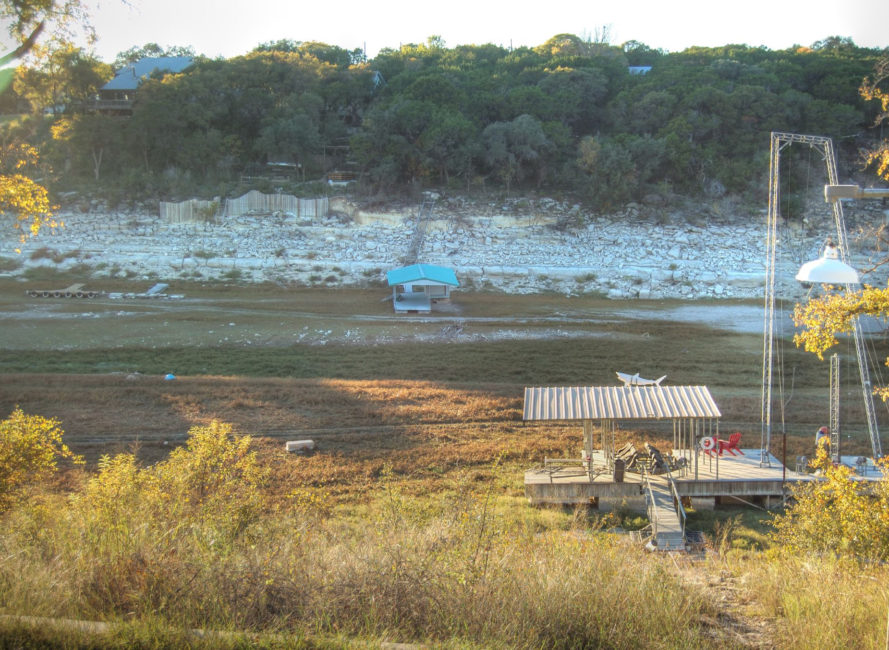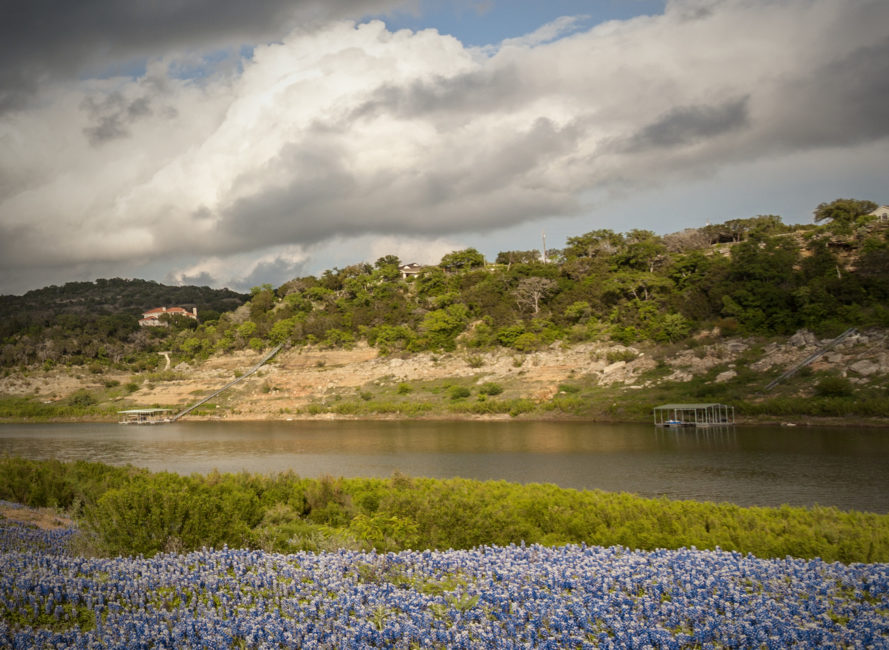 Photo : Jason Weingart
Photo : Jason Weingart
Nature
That Time a Texas Lake Dried Up Then Filled With Bluebonnets
For the town of Spicewood Beach on Lake Travis, the situation had grown downright dire. They completely ran out of water in January of 2012 and began to have it trucked in. The wells which the town’s 1,100 residents depend on had become so low they were no longer reliable.
This portion of Lake Travis had almost completely dried up.

Photo: Flickr/Jim Howard
Over time, bluebonnet seeds washed into the lake and had gathered at the bottom. The thing about a bluebonnet seed is when submerged it can sit dormant for long periods of time.
Once the seeds were no longer covered by water they began to germinate.
 Photo: Jason Weingart
Photo: Jason Weingart
Bluebonnet seeds have a built-in survival mechanism. During their first season, only some germinate in case they face harsh conditions such as a drought. By 2014 the plants had overtaken the dried up lake bed.
Bluebonnets covered several acres worth of landscape.
 Photo: Jason Weingart
Photo: Jason Weingart
The bluebonnets here bloomed incredibly thick. They were also very tall and full.
The blooms didn’t just cover a lot of area, they were also very thick.
 Photo: Jason Weingart
Photo: Jason Weingart
Dirt roads were run throughout the bluebonnets, allowing visitors to drive their vehicles around to find different vantage points.
It was like driving through pure Texas bliss.
 Photo: Jason Weingart
Photo: Jason Weingart
The drought was broken when a series of heavy rainfall events impacted the area beginning in late spring of 2015. By the time the 2016 bluebonnet season rolled around, the fields were completely underwater.


